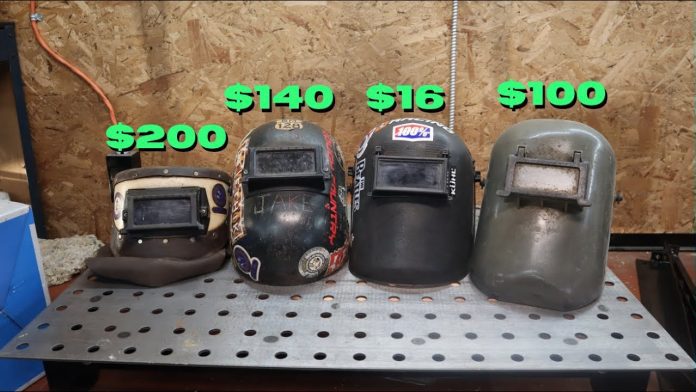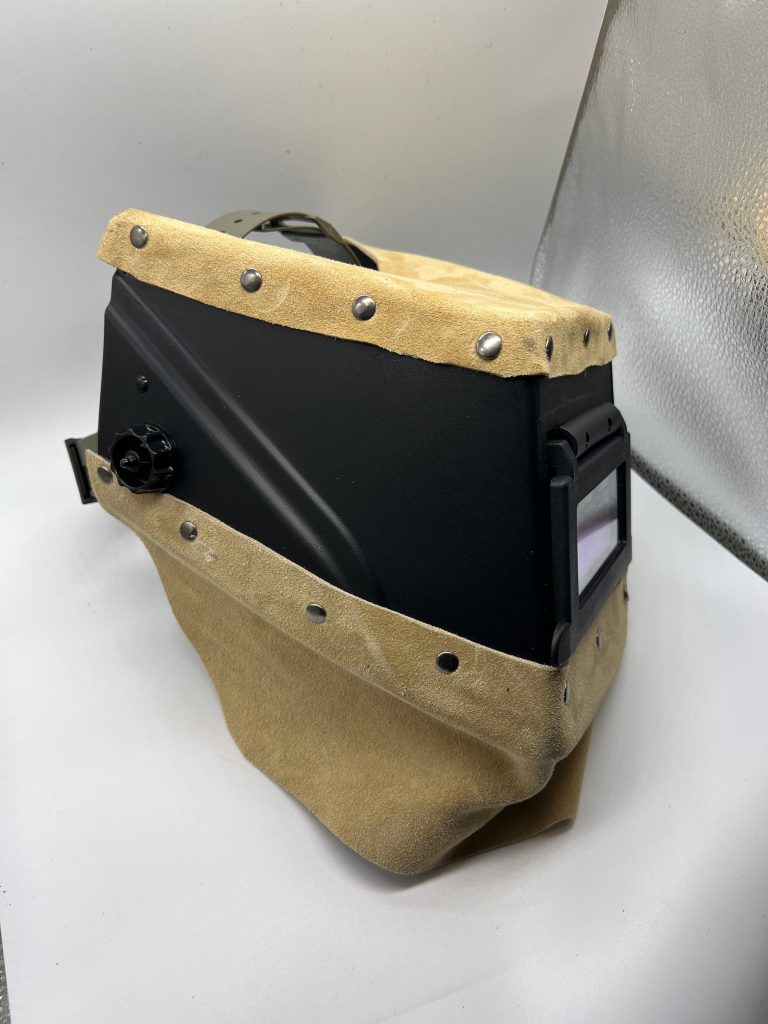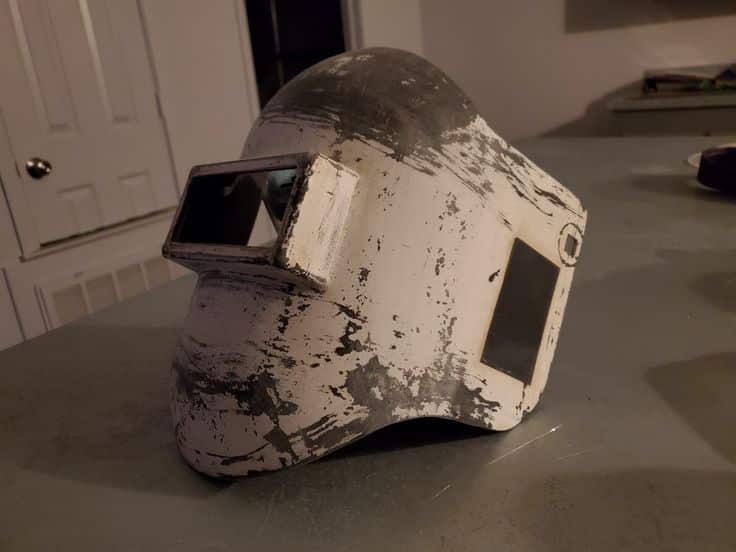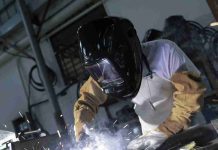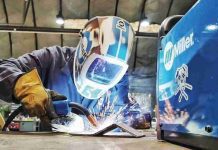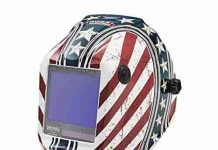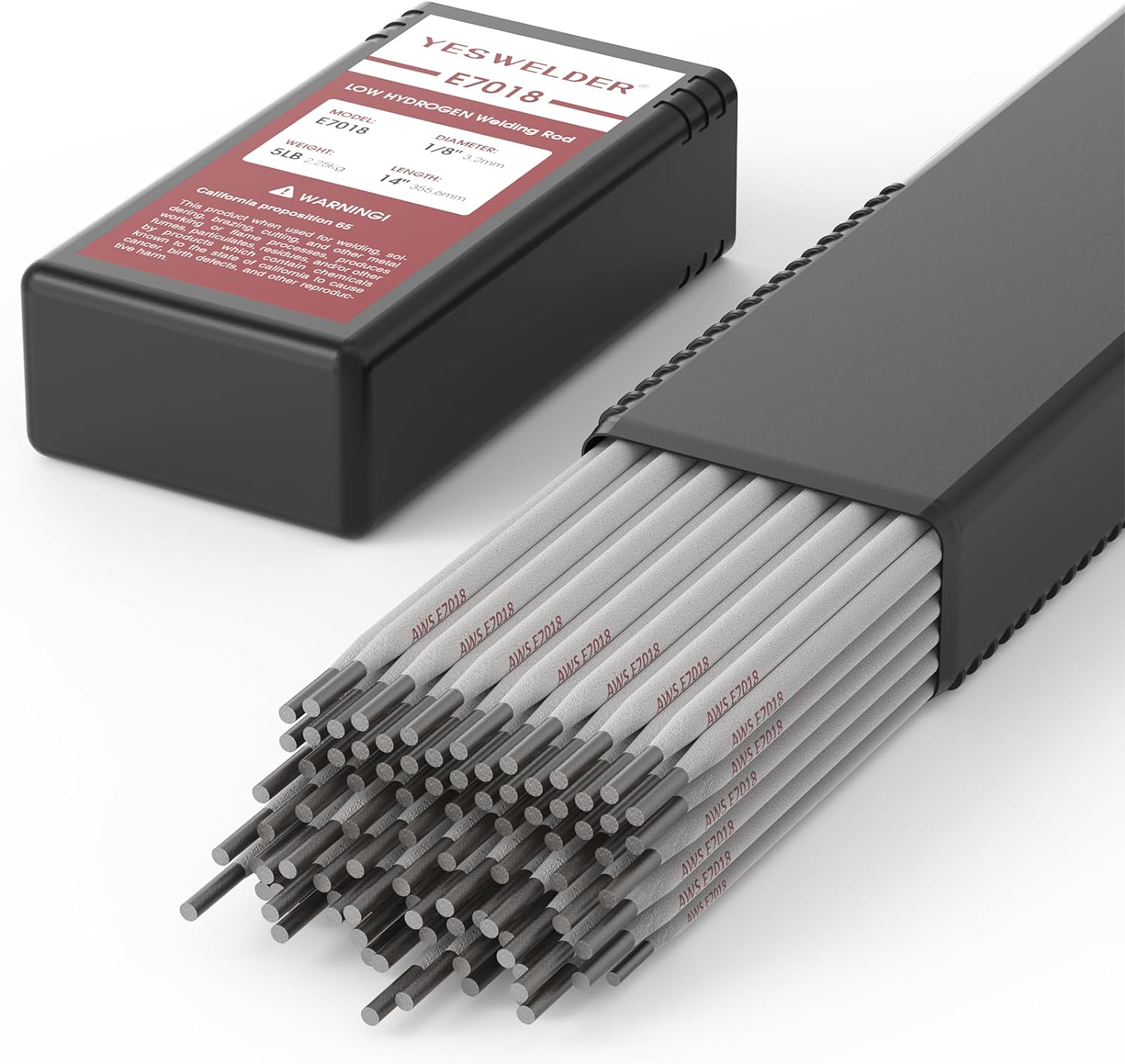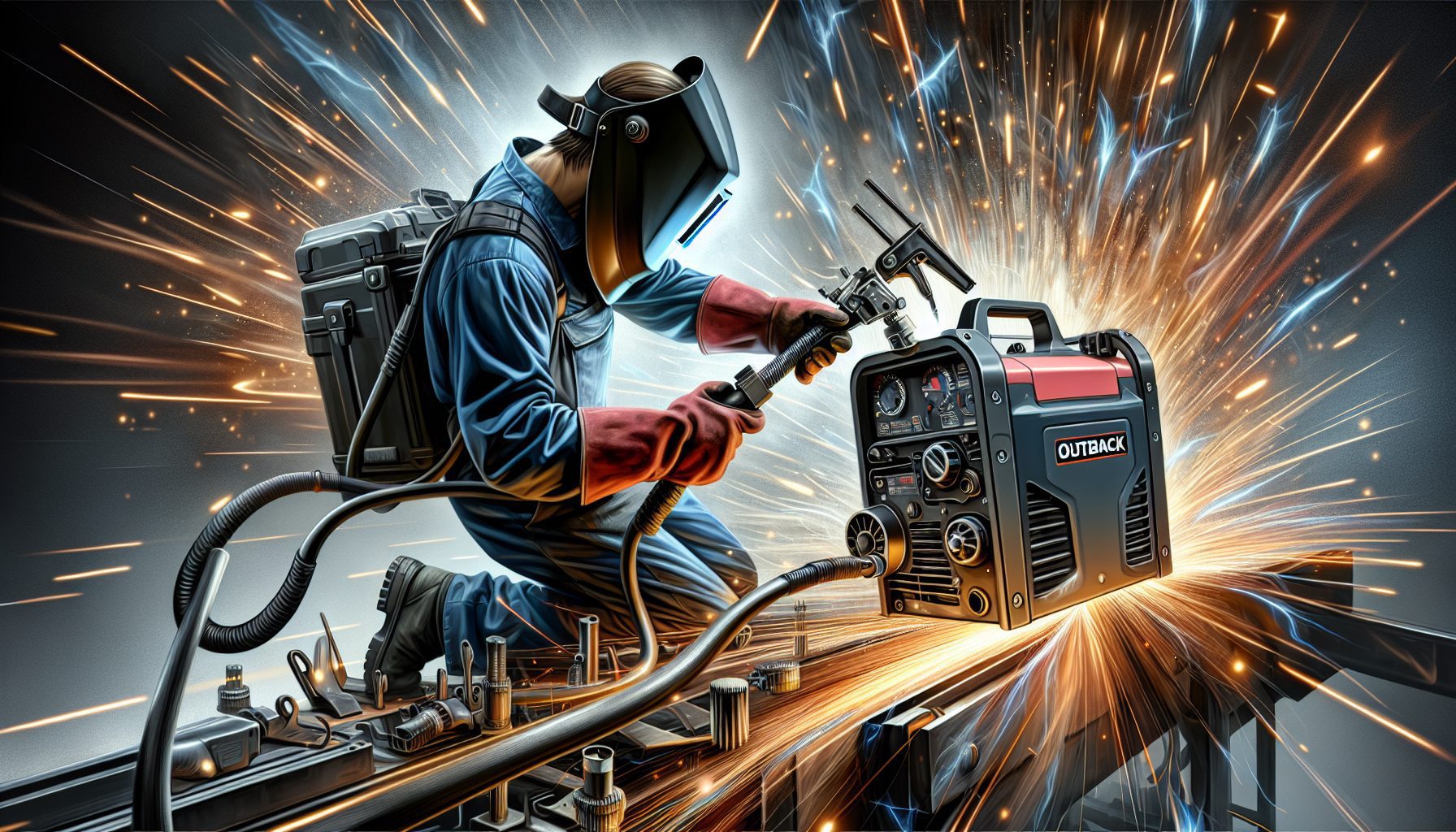Ever wondered why welders chop their hoods? We invite you to uncover the fascinating reason behind this intriguing practice. In the world of welding, where sparks fly and metal melds, there exists a unique tradition among seasoned professionals – the act of customizing their welding hoods. These sturdy helmets, essential for shielding the eyes and face from intense heat and blinding light, often undergo a remarkable transformation. Discover how welders craft their personalized hoods to enhance comfort, visibility, and even express their individuality in the midst of their fiery craft.
Safety Reasons
When it comes to welding, safety should always be a top priority. One of the main reasons why welders choose to chop their hoods is for enhanced protection from sparks and heat. By cutting out certain areas of the hood, welders can significantly reduce the risk of sparks and hot particles from entering their face or eyes, potentially causing serious injury. By creating a smaller opening for their eyes, they can ensure that their vision is protected while still allowing for clear visibility of the welding area.
Additionally, chopping hoods provides better visibility overall. Welders need to have a clear line of sight to their workpieces, as precision and accuracy are essential in this field. By removing unnecessary material from the hood, welders can have a wider and unobstructed field of view, enabling them to see their work more clearly and make accurate judgments during the welding process. This improved visibility can lead to increased productivity and better quality welds.
Another advantage of chopping hoods is that it facilitates easier communication between welders. In a welding environment, effective communication among team members is crucial for maintaining safety and coordinating tasks. With a modified hood, welders can easily communicate with their colleagues through gestures or by wearing a handheld communication device. This eliminates the need for constant removal and adjustment of the hood, ensuring that communication flows seamlessly without compromising safety.
Furthermore, chopping hoods can help reduce neck strain. Traditional welding hoods can be heavy and put strain on the neck, especially during extended periods of use. By cutting out portions of the hood, welders can significantly reduce its weight, relieving strain on the neck muscles. This not only enhances comfort but also minimizes the risk of fatigue or injury caused by prolonged wear.
Improved Comfort and Fit
In addition to safety considerations, welders often chop their hoods to achieve a more comfortable and customized fit. One of the benefits of chopping hoods is easier access to the welding area. By removing unnecessary material, welders can have unobstructed access to the workpiece, allowing them to position themselves more comfortably and maintain better control over their welding torch. This improved access can greatly enhance the welder’s overall comfort and efficiency.
Moreover, chopping hoods reduces the weight on the head. Traditional hoods can be heavy, which can be cumbersome and uncomfortable for welders, especially during long welding sessions. By removing excess material, welders can reduce the weight of the hood, significantly improving their comfort and reducing strain on their neck and shoulders. This increased comfort enables welders to focus more on their work, resulting in improved productivity and reduced fatigue.
Better ventilation is also a benefit of chopping hoods. Traditional hoods can be tight-fitting and restrict airflow, causing discomfort and excessive sweating for welders. By altering the hood, welders can create additional ventilation holes or modify the existing design to improve the airflow within the helmet. This improved ventilation helps to keep the welder’s head cooler, reducing discomfort and ensuring that they can work for longer periods without feeling overheated.
Furthermore, chopping hoods allows for customized adjustments. Every welder is unique, and each may have specific preferences regarding their gear. By modifying a hood, welders can make personalized adjustments to ensure a perfect fit for their head shape and size. These modifications can include padding, strap adjustments, or even incorporating additional accessories to enhance comfort and usability. The ability to customize their hood allows welders to have a gear that is tailored to their specific needs, resulting in a more enjoyable and productive welding experience.
This image is property of i.ytimg.com.
Enhanced Maneuverability
Chopping hoods also contributes to improved maneuverability during the welding process. The ability to have a wider range of motion is crucial for welders, as it allows them to easily navigate around the workpiece and reach challenging angles. By reducing the size and weight of the hood, welders can enjoy increased flexibility and mobility, making it easier to move their head and maintain optimal positioning during welding. This enhanced maneuverability allows for better weld control and precision, ultimately resulting in higher quality welds.
Moreover, by chopping hoods, welders can experience less interference with their equipment. Traditional hoods may protrude and obstruct the welder’s line of sight or interfere with the welding torch or other tools. By modifying the hood to fit their specific needs, welders can ensure that it doesn’t hinder their ability to see clearly or maneuver their tools effectively. Having a modified hood that is designed to minimize interference can significantly improve efficiency and contribute to a smoother welding process.
Additionally, chopping hoods makes it easier to switch between different welding positions. Welding often requires welders to work in various positions, including overhead, horizontal, vertical, or even in confined spaces. With a modified hood, welders can adapt their gear to accommodate different positions more easily, ensuring that they can maintain a clear line of sight and a comfortable working posture. This flexibility allows welders to complete their tasks efficiently and without unnecessary strain or discomfort.
Adjusting Light Exposure
Another reason why welders choose to chop their hoods is to have better control over light exposure. Welding generates intense arcs of light, which can be harmful to the eyes if not properly shielded. By modifying their hoods, welders can block excessive light from entering their peripheral vision, reducing the risk of eye strain and damage.
Additionally, chopping hoods can contribute to reducing eye fatigue. Welding for extended periods can strain the eyes due to constant exposure to intense light. By modifying the hood to ensure optimal visibility while reducing unnecessary glare, welders can help alleviate eye fatigue and maintain their visual acuity throughout their work shift.
Moreover, chopping hoods can help avoid lens degradation. Over time, the lenses of welding hoods can suffer from scratches, burns, or other forms of damage, compromising their performance and clarity. By modifying the hood, welders can adapt it to fit protective lens covers or incorporate lens replacement mechanisms, allowing them to easily replace damaged lenses. This ensures that welders maintain clear vision and prolong the lifespan of their welding helmets.
Furthermore, chopping hoods allows welders to adapt their gear to specific welding techniques. Different welding techniques, such as MIG, TIG, or stick welding, may require varying levels of light exposure or specific visibility angles. By modifying their hoods, welders can customize their gear to suit their preferred technique, optimize their visibility, and maintain maximum safety during each welding process.
This image is property of i.ytimg.com.
Personal Preference
It’s not just about safety and functionality; personal preference also plays a significant role in why welders choose to chop their hoods. Welders take pride in their work and often view their gear as an extension of their identity. By modifying their hoods, welders can express their personal style and appearance. Some may choose to incorporate unique designs, colors, or even accessories to make their gear stand out in a crowd. This personal touch allows welders to feel more connected to their work and showcase their individuality within the welding community.
Additionally, chopping hoods can be seen as a symbol of experience and expertise. The process of modifying a hood requires skill, knowledge, and a deep understanding of the welding craft. By creating a customized gear, welders demonstrate their mastery of their trade and earn the respect of their peers. This sense of accomplishment and recognition can boost welders’ confidence and motivation, further fueling their dedication to their work.
Moreover, following trends within the welding community is another reason why welders chop their hoods. Like any other field, welding experiences trends and innovations in gear and equipment. By staying up-to-date with these trends and modifying their hoods accordingly, welders can feel more connected to the larger welding community. This sense of belonging and camaraderie can foster a supportive and collaborative environment among welders.
Lastly, chopping hoods allows welders to differentiate themselves from others. In a competitive industry, standing out can be beneficial for career advancement and personal branding. By having a unique hood design or modification, welders can make a memorable impression and attract attention both on the job site and in the industry as a whole. This can open up opportunities for networking, collaboration, and even career advancement.
Overcoming Limitations of Standard Hoods
Standard hoods may have limitations that can be overcome by chopping. One limitation is the insufficient field of view. Traditional hoods are designed to provide a general range of visibility, but they may not offer the clarity or coverage that welders need for intricate work or in tight spaces. By chopping their hoods, welders can customize their gear to provide a wider field of view, ensuring that they can see every detail of their workpiece without obstruction.
Moreover, standard hoods may not provide adequate head coverage. This can leave areas of the welder’s head exposed to sparks or other potential hazards. By modifying the hood to fit their specific head shape and size, welders can create a secure and comfortable fit that offers optimal coverage, providing them with the utmost protection during welding operations.
In addition, standard hoods may not be suitable for unique welding tasks. Some welding projects require unconventional positions or unconventional welding techniques that may not be well-suited to traditional hoods. By chopping their hoods, welders can adapt the gear to their specific needs, ensuring that they have the necessary visibility and comfort to complete even the most challenging welding tasks.
Furthermore, standard hoods may become uncomfortable for prolonged use. Traditional hoods can be heavy, restrict airflow, or cause discomfort due to their one-size-fits-all design. By modifying the hood, welders can tailor it to their comfort preferences, incorporate additional padding or ventilation, and alleviate any discomfort experienced during extended welding sessions.
This image is property of i.etsystatic.com.
Desire for Better Productivity
Chopping hoods can also be driven by a desire for improved productivity. Welders understand that a more efficient workflow can lead to increased output and better quality welds. By modifying their hoods, they can achieve quicker response times. Traditional hoods may require more time-consuming adjustments, such as flipping the helmet up or down to switch between welding and inspection modes. Chopped hoods, on the other hand, can allow for quicker and more seamless transitions between these modes, saving valuable time and enhancing overall productivity.
Moreover, chopping hoods improves control and accuracy. Welders rely on precise movements and the ability to see their work clearly to produce high-quality welds. By having a modified hood that provides better visibility and maneuverability, welders can achieve finer control over their welding torch and ensure that they are achieving the desired weld characteristics. This improved control and accuracy can lead to superior weld quality and reduce the need for rework or repairs.
Furthermore, having a modified hood can contribute to an efficient workflow. When welders have gear that is tailored to their needs, they can work more comfortably and confidently, resulting in a smoother welding process. With a custom-fit hood, welders can focus on the task at hand without being hindered by discomfort or distractions, ultimately saving time and improving overall efficiency.
Besides, chopping hoods can reduce downtime for adjustments. Traditional hoods may require frequent adjustments to ensure optimal fit, visibility, or comfort throughout the welding process. By modifying their hoods, welders can create a gear that requires minimal adjustments, reducing the time spent on fine-tuning the hood and allowing for uninterrupted workflow.
Saving Costs
Saving costs is another practical reason why welders choose to chop their hoods. Welding equipment can be expensive, and any opportunity to cut down on costs is advantageous. By modifying their existing hoods, welders can utilize the helmet parts they already have, reducing the need to purchase an entirely new hood. This cost-saving measure enables welders to allocate their budget to more specialized or high-quality equipment that can enhance their welding capabilities.
Additionally, avoiding the purchase of a new hood can save significant expenses. Quality welding hoods can be an investment, and purchasing a new one can be a substantial cost. By making modifications to their current hood, welders can save money without compromising safety or functionality. This financial flexibility allows welders to allocate their resources to other essential tools or materials required for their work.
Moreover, customization is a cost-saving strategy. Welders may have specific requirements or a unique head shape that doesn’t fit standard hoods perfectly. By customizing their existing hood, welders can adapt it to their needs without incurring additional expenses. This customization eliminates the need to purchase a more expensive, specialized hood, allowing welders to save money while still ensuring a perfect fit and maximum comfort.
Furthermore, chopping hoods may also save costs by avoiding the need for additional gear or accessories. Modifying a hood allows welders to incorporate additional features or accessories that may have otherwise required purchasing a separate piece of equipment. By customizing their hood to include features such as additional ventilation, communication devices, or lens protection mechanisms, welders can save money on purchasing these items separately.
This image is property of i.pinimg.com.
Advancements in Hood Technology
Advancements in hood technology have played a significant role in the popularity of chopping hoods. These advancements have provided welders with more options and capabilities, making modifications even more appealing. One of the notable advancements is the availability of auto-darkening filters. Traditional hoods typically feature fixed shade lenses that require manual adjustment for different welding processes. However, with auto-darkening filters, welders can enjoy the convenience of and seamless transition between different shade levels without the need for manual adjustments. This innovation is especially useful for welders who frequently work with various welding techniques or different arc intensities.
Additionally, integrated safety features have become increasingly prevalent in modern welding hoods. These features can include built-in safety mechanisms such as flame-resistant materials, impact-resistant designs, or even respiratory protection. By modifying their hoods to incorporate these advanced safety features, welders can benefit from enhanced protection without the need for additional gear or equipment. This integration of safety features not only improves safety but also simplifies the gear setup, making the welding process more efficient.
Moreover, advancements in hood technology have increased versatility and convenience. Modern hoods often have adjustable settings for sensitivity, delay, or the option to switch between welding and inspection modes. By having access to these versatile settings and features, welders can easily adapt their gear to different welding scenarios without the need to modify the hood extensively. This flexibility allows welders to optimize their workflow and achieve the desired results more efficiently.
Furthermore, advancements in hood technology have brought about higher durability and reliability. Traditional hoods may be prone to wear and tear, especially with constant exposure to harsh welding conditions. However, modern hoods often utilize more durable materials and improved construction techniques, making them more resistant to damage and increasing their lifespan. By modifying their hood with these advanced materials or reinforcing weak areas, welders can optimize the durability of their gear, reducing downtime and replacement costs.
In conclusion, there are numerous reasons why welders choose to chop their hoods. From safety concerns to improved comfort and fit, enhanced maneuverability to adjusting light exposure, personal preference to overcoming limitations of standard hoods, desire for better productivity to saving costs, and advancements in hood technology, each factor contributes to the popularity of modified hoods. Welders understand the importance of gear that meets their specific needs, allows them to work comfortably and efficiently, and enhances their overall welding experience. With the ability to modify their hoods, welders can achieve a perfect balance between safety, functionality, and personalization, ensuring that they can produce high-quality welds while expressing their individuality in the welding community.


